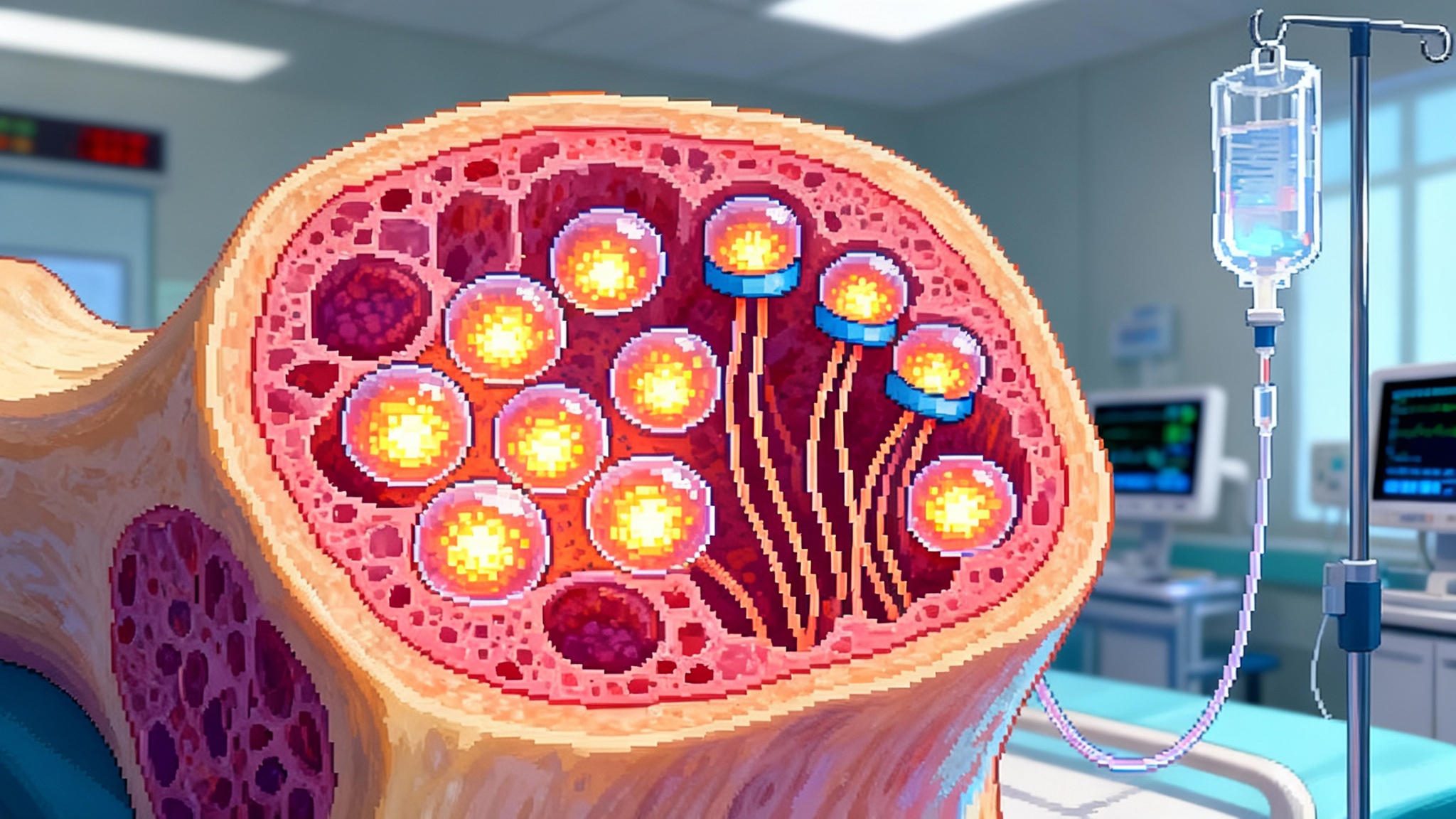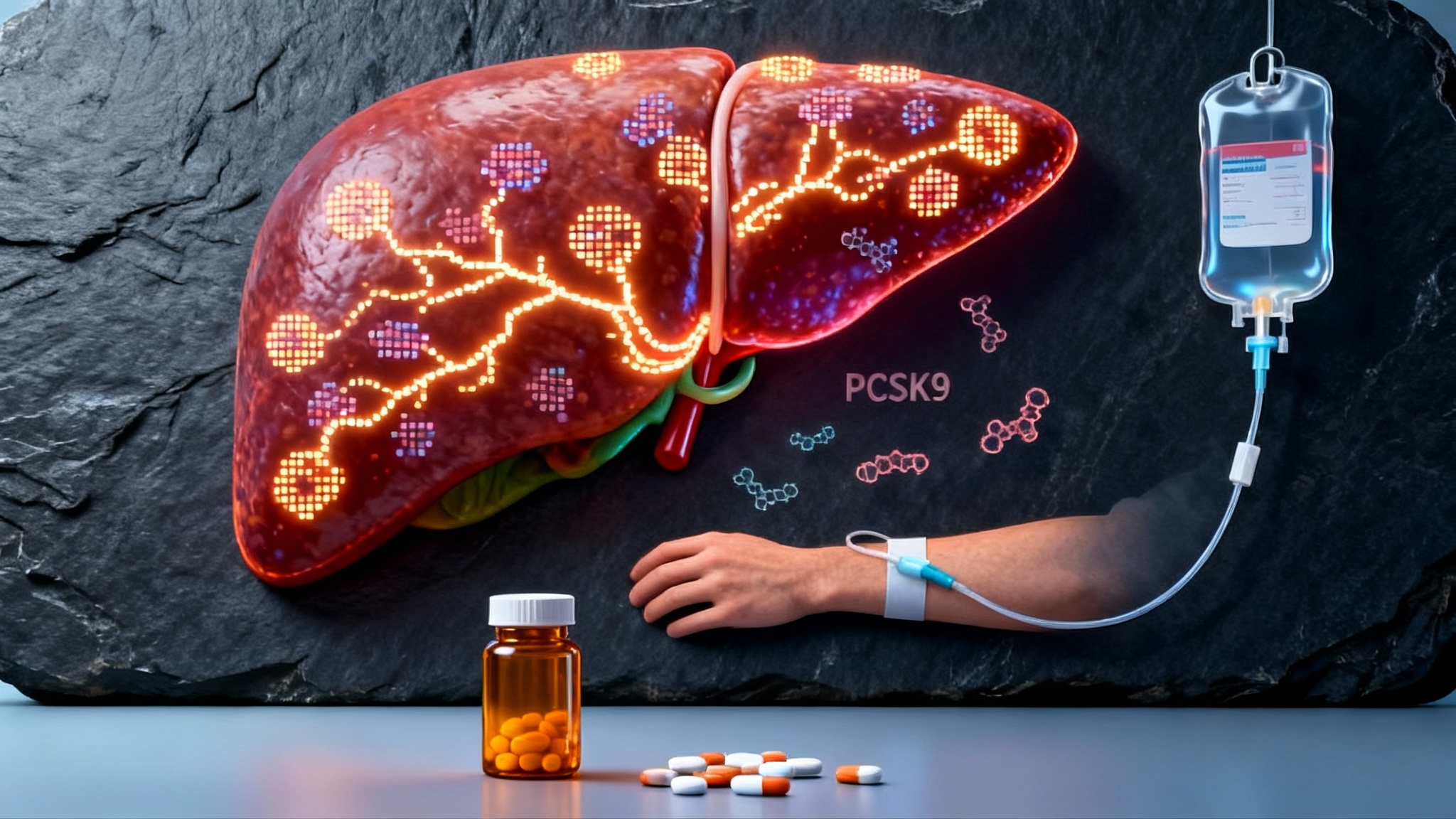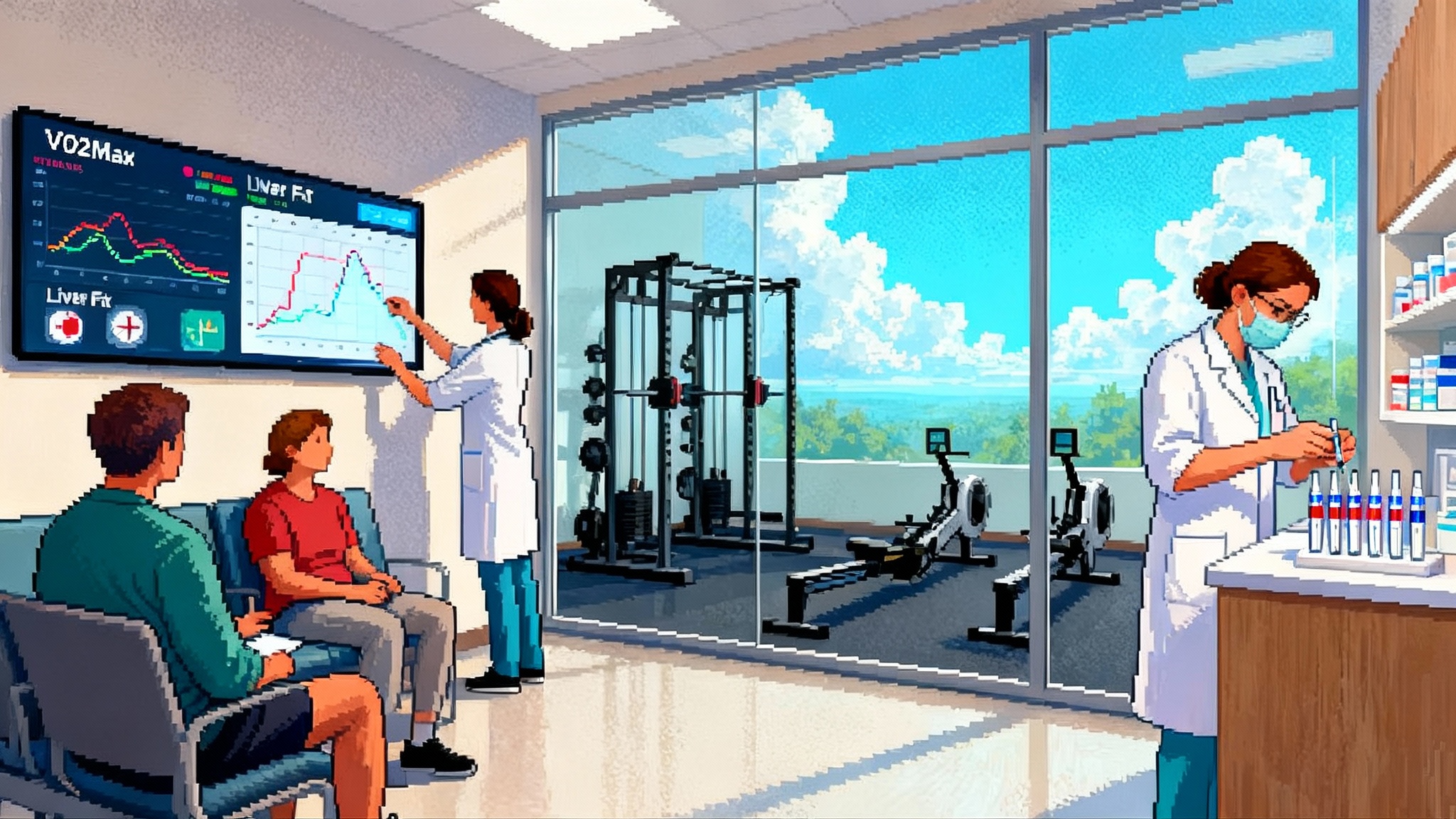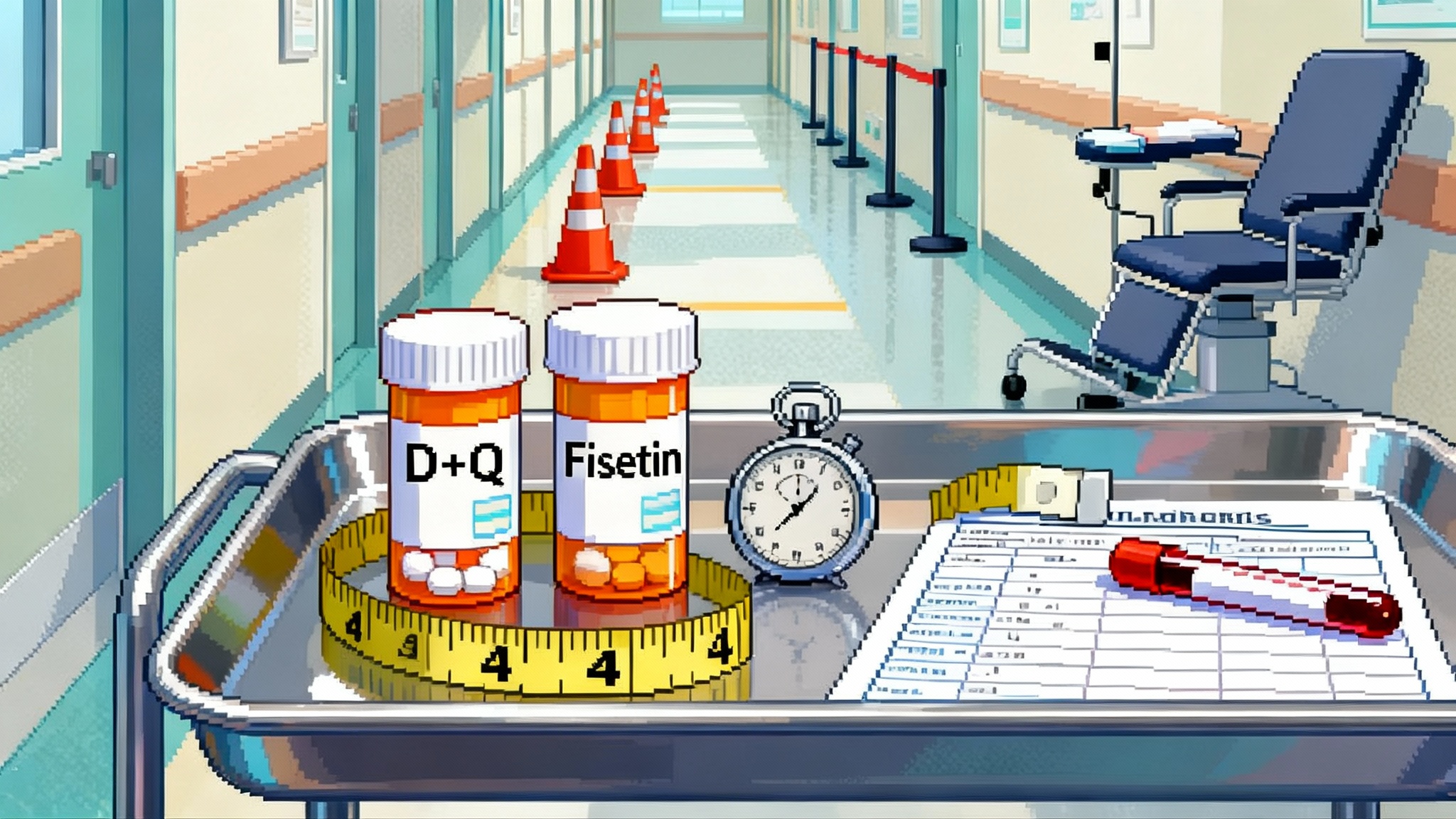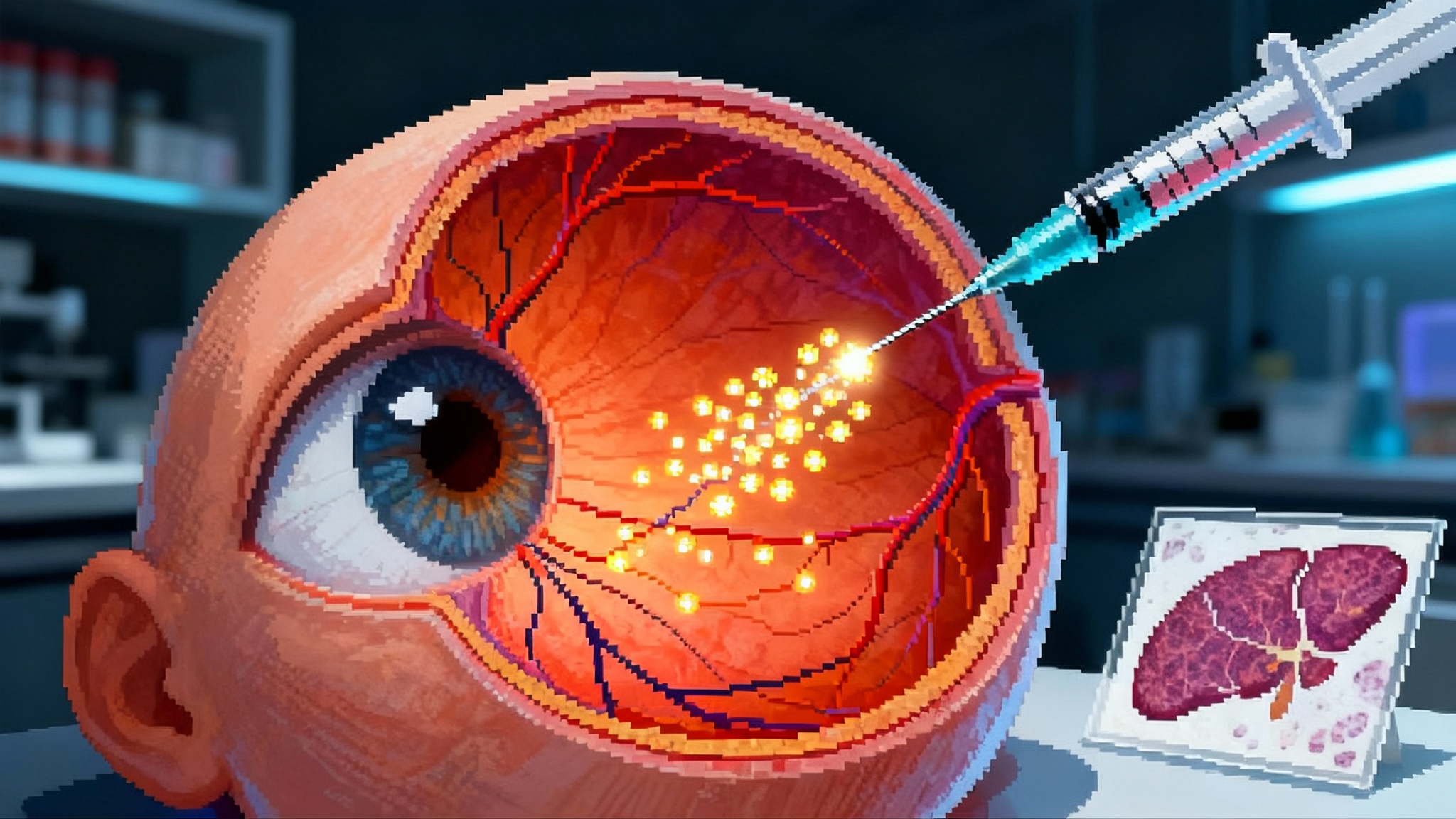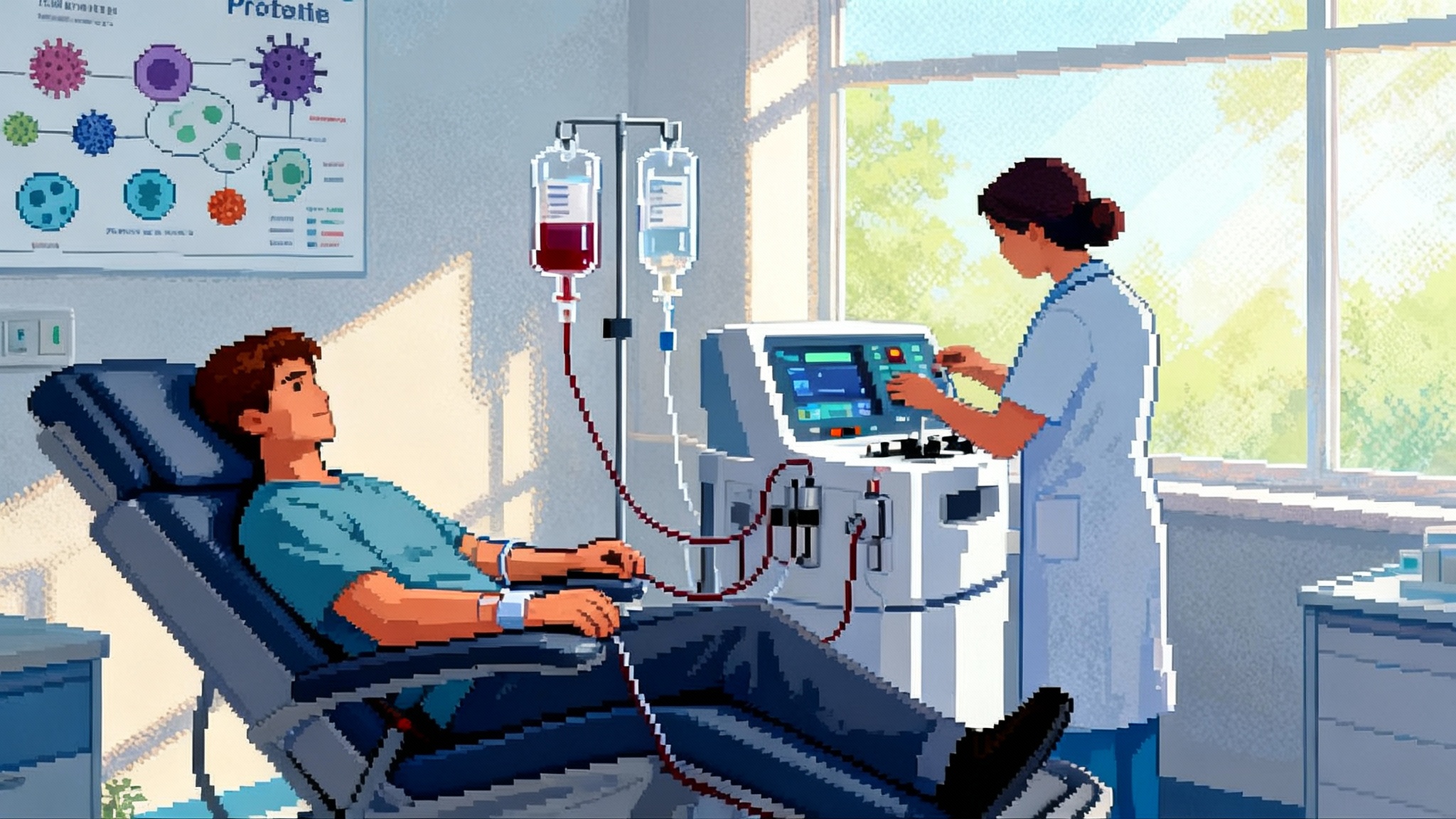CHIP becomes actionable: TET2, canakinumab and colchicine
Two 2025 signals shift clonal hematopoiesis from curiosity to clinical tool. A July genotype-guided trial tests canakinumab in TET2 CH, and ESC 2025 data suggest low-dose colchicine can slow TET2 clonal growth. Screening now has direct consequences.

The 2025 flip from bycatch to lever
For a decade, clonal hematopoiesis sat in an awkward space. Sequencing kept finding age related mutations in blood, often by accident. Risk looked real, but action was scarce. That changed this summer. On July 1, 2025, a team at Massachusetts General opened a phase 2, randomized, genotype guided study that assigns canakinumab or placebo to people with coronary disease, half of whom carry TET2 driven CH. The trial reads out vascular inflammation on coronary CT and tracks whether TET2 clone size moves over 48 weeks. You can read the protocol outline for a randomized genotype guided canakinumab trial.
Eight weeks later, at ESC Congress 2025, investigators reported that daily low dose colchicine tamped down clonal growth in people with chronic coronary disease, with the effect most evident in TET2 clones. The analysis came from a prospective substudy embedded in LoDoCo2, with deep sequencing at multiple timepoints. The headline is simple. Clones are not fixed. Anti inflammatory therapy can slow them. The details are in a LoDoCo2 substudy published in JACC.
Two signals, two levers, one direction. Screening for CH is moving from incidental bycatch to an actionable handle for cutting late life cardiovascular and cancer risk. Here is how that shift could play out.
Why TET2 sits at the center
TET2 loss of function drives myeloid cells toward a pro inflammatory state. In mice, that accelerates plaque formation. In people, TET2 and a few other drivers associate with higher rates of coronary disease, stroke, heart failure, and myeloid malignancy. The interleukin 1 axis is a key conduit for that risk. Blocking IL 1β in CANTOS reduced cardiovascular events overall, and exploratory genomic analyses suggested people with TET2 CH might be the biggest responders. That is the biological bet the July 2025 trial is making explicit. If IL 1β blockade cools inflamed arteries more in TET2 carriers, that unlocks a precision prevention path.
Colchicine works along a different route, damping microtubule dependent neutrophil activity and turning down inflammasome signaling. It cut hard cardiovascular events in LoDoCo2 and COLCOT. The ESC 2025 substudy pushes the story closer to first principles. It shows that one pill a day can slow the selective expansion of TET2 mutant cells in the blood. Slower clonal growth should mean lower long term risk, because larger clones link more strongly to events.
What this means for testing
If therapy depends on what gene and how big the clone is, then finding CH cannot remain accidental. Still, not everyone needs to be screened tomorrow. A sensible near term approach is targeted rather than universal.
Who to prioritize now
- Adults 60 and older with established atherosclerotic cardiovascular disease, especially if they have residual inflammation or recurrent events despite standard therapy
- Adults of any age with premature coronary disease or stroke where residual inflammatory risk is suspected
- Survivors of cytotoxic chemotherapy or radiation whose risk of therapy related myeloid neoplasms may be increased
- Patients undergoing tumor sequencing where matched blood is available and CH can be reported without extra cost
- People with persistent, unexplained cytopenias who are already being evaluated for hematologic disorders
Where to start
- Use a targeted next generation sequencing panel that covers common CH drivers, including DNMT3A, TET2, ASXL1, JAK2, SF3B1, SRSF2, TP53, IDH1, and IDH2
- Ask the lab to report variant allele fraction with adequate depth and error correction, and to annotate known myeloid neoplasm driver hotspots
- Request flagging of multiple driver mutations or co mutation patterns that elevate hematologic risk, and track how pending LDT policy shifts in 2025 may affect reporting
How often to check
- If negative at baseline and cardiovascular risk is high, consider repeating in two to three years, since prevalence rises with age
- If positive, consider repeating in 12 to 24 months to monitor clonal dynamics, or sooner if blood counts change
- If variant allele fraction jumps or new high risk genes appear, bring hematology into the loop
Thresholds that matter
Definitions and risk are not binary. Three variables do most of the work.
- Clone size. By convention, CHIP is called at variant allele fraction of 2 percent or more. Cardiovascular risk ties to size. Larger clones carry greater event risk. Several analyses suggest that risk for cardiovascular mortality becomes more evident in larger clones, and that faster growth tracks higher future risk.
- Gene. Not all drivers are equal. TET2, ASXL1, JAK2, TP53, spliceosome genes, and IDH1 or IDH2 are generally higher risk for hematologic progression and appear more strongly linked to cardiovascular events. Isolated DNMT3A tends to be lower risk for blood cancer and mortality relative to other genes, although cardiovascular associations exist.
- Burden and complexity. Multiple driver mutations, or high variant allele fraction combined with cytopenias, push risk up and argue for closer follow up and specialty input.
A practical readout for clinicians
- Report CHIP present or absent
- List each driver with its variant allele fraction
- Flag if any variant allele fraction is at or above 10 percent
- Flag if two or more driver mutations are present
- Note if the patient has abnormal counts or other concerning features
This simple grid turns a genomic report into an action map instead of an anxiety generator.
From identification to action
Translate a positive result into three tracks.
Track 1. Standard risk factor hardening
- Push LDL to guideline floor with high intensity statins, ezetimibe, and PCSK9 class therapies as needed. See how fast lipid care is evolving in our look at PCSK9 options in 2025.
- Stop smoking and control blood pressure and diabetes with a goal of reducing systemic inflammatory drive
- Update vaccines. Some immune targeted therapies can increase infection risk, and older adults benefit from pneumococcal and influenza vaccines
Track 2. Anti inflammatory therapy informed by genotype
- Colchicine 0.5 mg daily has outcome data in chronic coronary disease and now has prospective evidence that it attenuates TET2 clonal growth. For many patients with established coronary disease and a TET2 clone, this will be the first add on to consider, after reviewing tolerability and drug interactions
- IL 1β blockade with canakinumab remains a specialty therapy. The July 2025 trial is the first to randomize people specifically enriched for TET2 CH and then measure both arterial inflammation and clone size over time. Until results arrive, access will be through trials or select off label use in centers with experience. If vascular inflammation and clonal dynamics both move in the right direction in TET2 carriers, that will justify biomarker guided coverage
Track 3. Hematology surveillance
- Triage patients with high risk genotypes, higher variant allele fraction, multiple drivers, or cytopenias to hematology for baseline evaluation
- Consider bone marrow evaluation if counts are abnormal or if high risk features coexist
- Keep an eye on symptoms that could reflect evolving myeloid disease
Payer policy is likely to follow the evidence curve
Payers tend to ask three questions before covering a new test.
- Does the result change management today
Yes for a growing subset. If a 68 year old with chronic coronary disease and a TET2 clone is a candidate for colchicine, that is an immediate, guideline compatible action. If a patient meets criteria for enrollment in a targeted anti IL 1β trial, the test unlocks a trial option.
- Are there clear thresholds for action
Also yes. A variant allele fraction of 2 percent defines CHIP in most labs. A variant allele fraction at or above 10 percent or the presence of high risk genes tends to carry more risk and can justify therapy consideration and closer follow up. Multiple drivers amplify risk. These cut points create utilization rules that are easy to audit.
- Will outcomes improve in a time frame that matters to the plan
Colchicine already reduces cardiovascular events in chronic coronary disease and now appears to slow TET2 clonal growth. That combination sets up a near term covered use in secondary prevention, especially in members with documented TET2 CH. For canakinumab, payers will likely wait for the phase 2 imaging and clonal endpoints, followed by hard event data or validated surrogates. Expect coverage to begin in high risk subgroups at centers of excellence with prior authorization and clear documentation of genotype, clone size, and inflammatory burden.
Practical coding and logistics
- CHIP often comes as an add on to tumor or cardiovascular panels. Use established molecular CPT codes rather than unlisted codes when possible, and document medical necessity. Many payers require test specific identifiers and prior authorization for molecular diagnostics
- Build a simple note template that captures gene, variant allele fraction, and action
Healthspan gains if the bet pays off
Clonal hematopoiesis shows up in at least one in ten adults over 60 and in a much larger fraction over 80. If slowing the growth of risky clones reduces myocardial infarction, stroke, and heart failure over a decade, then healthspan extends without touching lifespan directly. Add the possibility that IL 1β blockade in TET2 carriers lowers the incidence of some solid tumors and therapy related anemia, as suggested by analyses of older trials, and the case strengthens. Even a modest absolute risk reduction in a common, older population translates into many more years lived without disability.
Project a simple scenario. In a panel of adults over 65 with coronary disease, say 15 percent carry TET2 CH and 10 percent carry other higher risk drivers. If colchicine lowers events as shown in prior trials and attenuates TET2 clone growth, and if targeted IL 1β blockade proves to shrink arterial inflammation and slow clone expansion in TET2 carriers, then two complementary levers are available. One is cheap and broad. The other is targeted and likely reserved for those with the most to gain. Together they could trim recurrent events, delay heart failure progression, and potentially cut secondary cancer risk. Work to connect this with emerging biomarker frameworks like the 500k proteome effort.
Risks and caveats
- Colchicine is generally well tolerated at 0.5 mg daily, but gastrointestinal side effects and drug interactions with strong CYP3A4 or P glycoprotein inhibitors can be limiting in frail patients
- Canakinumab has an infection signal and is an expensive biologic. Careful selection and vaccination matter
- Variant allele fraction estimates have noise at low levels. Use consistent assays and look for trends rather than single point swings, especially below 5 percent
- CH is not monolithic. DNMT3A only CH behaves differently than TET2 or spliceosome CH. Avoid one size fits all reactions
- Equity matters. CH is more common with age. If access to testing and anti inflammatory therapy is uneven, gaps will widen
What to watch next
- Interim analyses from the July 2025 canakinumab study that tie imaging changes to shifts in TET2 variant allele fraction
- Additional ESC and AHA presentations that track clone dynamics on colchicine across genes beyond TET2 and in primary prevention settings
- Health economic models that compare universal screening at 60 versus targeted screening in people with established coronary disease
- Harmonized lab standards for reporting variant allele fraction and driver classification in CH
How clinics can get ready now
- Add a CH section to existing CAD or stroke clinics. Confirm that your sequencing partner can report CH drivers with variant allele fraction
- Build a referral pathway to hematology for high risk genotypes, larger clones, or abnormal counts
- Start a registry that captures genotype, clone size, treatment choices, and outcomes. You will learn faster than waiting for journals
- Educate patients with simple language. Explain that CH is common with aging, that risk depends on the gene and the size of the clone, and that therapies exist to reduce risk
The bottom line
July and August 2025 turned CH from a passive risk marker into a set of targets you can act on. Canakinumab is being tested head on in people with TET2 CH. Colchicine is already blunting TET2 clonal growth while it cuts cardiovascular events. That combination makes a strong case for moving CH screening from incidental to intentional in older adults at cardiovascular risk. Start with who stands to benefit, use thresholds that map to action, and connect positive tests to therapies that buy healthier years.
